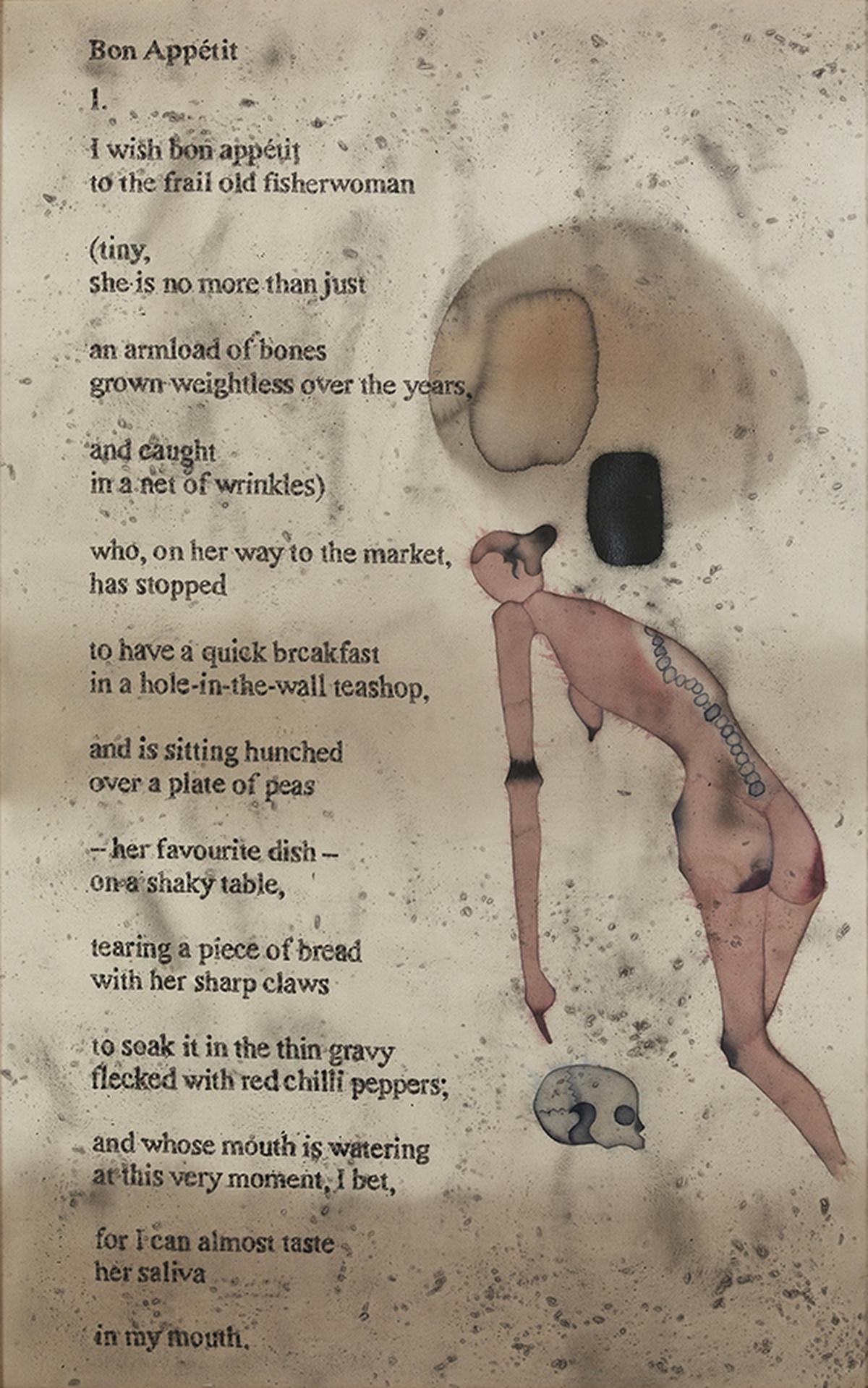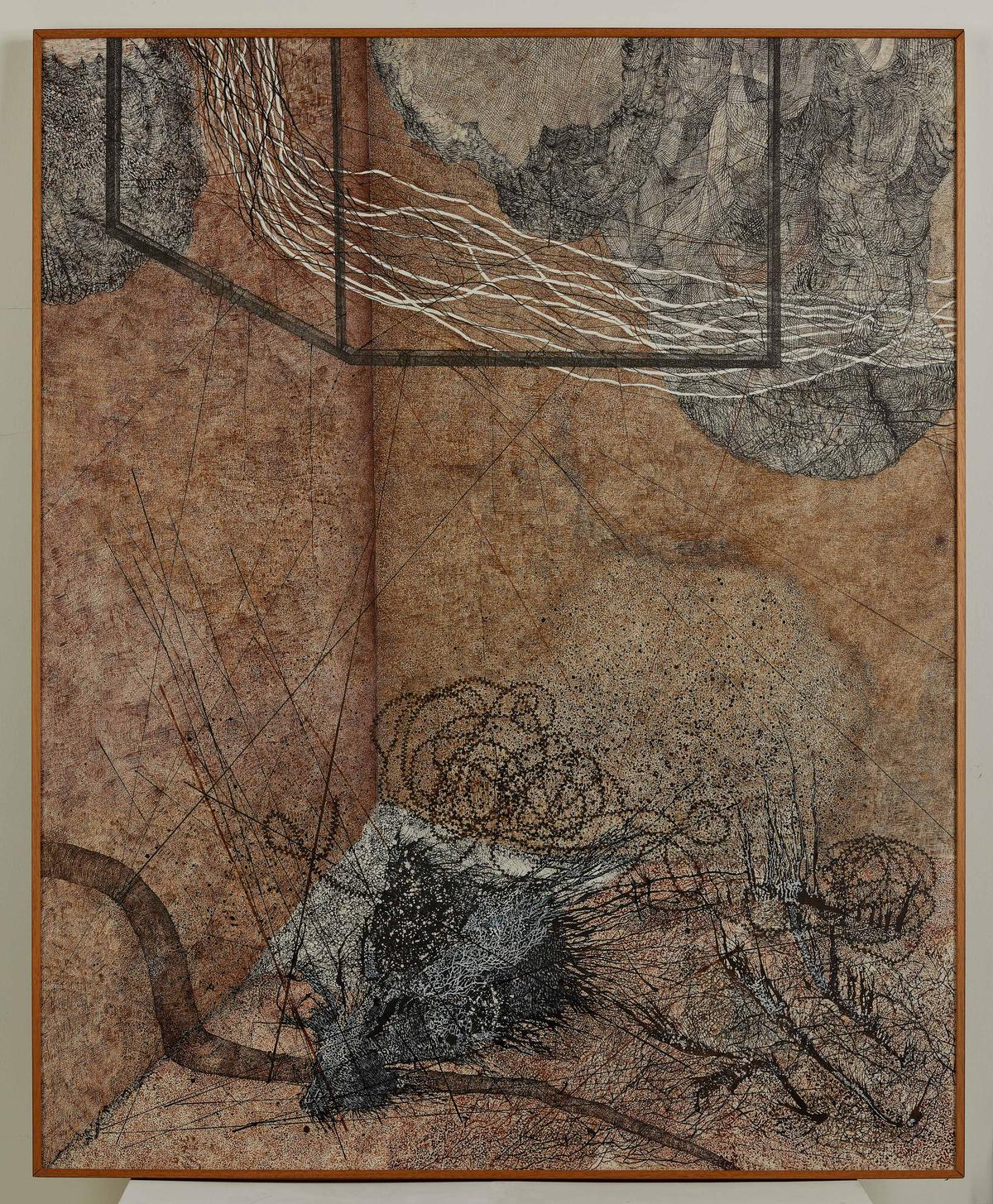An exhibition at Emami Art, Kolkata, celebrated paper as medium and message
Brittle, durable. Flimsy, sturdy. We take these paradoxical qualities of paper for granted but since its invention in China in 105 AD by Ts’ai Lun, an official at the imperial court, paper has been used by artists, thinkers, writers, scientists and craftsmen as the medium for their creations, which, thus enshrined, have survived the wear and tear of centuries, largely unscathed. The Politics of Paper, a recently concluded exhibition at Emami Art, Kolkata, was a celebration of these apparently irreconcilable qualities of paper. At a time when virtual reality has nearly nudged physical reality out of our reckoning, this exhibition curated by Ushmita Sahu reminded us that art is a tactile experience and that our eyes are as sensitive to varying textures as our epidermis.
All the participants — Adip Dutta, Anju Dodiya, Atul Dodiya, Chandra Bhattacharjee, Jagannath Panda, Jayashree Chakravarty, Mithu Sen, N.S. Harsha, Prasanta Sahu and T.V. Santhosh — used paper as the main medium of their works but four of them — Anju Dodiya, Chakravarty, Sen and Sahu — engaged with it more physically than the others, gouging, lacerating and even mashing it with other media to create imagined textures or shapes.
Poetry and persona
Sen evoked the terrifying beauty of death in her small, spare, delicately painted watercolours, Conjoined Twins and Unwing. Creativity and its feared death were also the theme of Anju Dodiya’s three large works of watercolour and charcoal in vivid shades of carmine and black. The allusion to Sylvia Plath’s poetry and the use of screen print and lithograph alongside shards of looking glass pointed at introspection and the fragmentation of persona.

CHANDRA BHATTACHARJEE’s Untitled – charcoal and dry pastel on paper
| Photo Credit: Emami Art
Inside giant backlit palimpsests made with overlays of rice paper, cotton fabric, tissue and cellophane, glowed dried creepers, roots, leaves and flowers in Chakravarty’s work. They made up a complex web, a living entity representing nature untouched by human agency.

MITHU SEN’s Unwing – mixed media on kozo paper and light box
| Photo Credit: Emami Art
Sahu dealt both with politics — his engagement with Birbhum farmland — and paper in his Harvesting: The Untold Story,A Conversation with the Land. White paper reproductions of the land’s yield were affixed with texts telling the stories of farmers. It made for a strong statement on our disregard for the very hands that feed us.
It was impossible to miss Harsha’s Reclaiming the Inner Space, a 12ft by 39ft panel composed of aluminium and aluminium composite panel mirror — common building material — along with found cartons, acrylic and a ‘herd’ of 1,400 wooden elephants. His other two works, a carton painted with myriad tiny faces and a sculpture of packaging replicated in stainless steel were a pithy commentary on the nature of consumerism and ‘mall culture’.
In Dutta’s work, discarded and unidentified objects found in street corners and pavements were endowed with a distinct identity of their own, like the fascinating life of organisms revealed under a microscope. Dutta revealed the form concealed in chaos.

ATUL DODIYA’s Bon Appetit 1 – watercolour and charcoal on paper
| Photo Credit: Emami Art
Atul Dodiya’s three works had the text of Arun Kolatkar’s poetry on paper stained with crushed charcoal and sprinkled water, which added a visual dimension to the shock value of Kolatkar’s pungent commentary on Bombay.
Bhattacharjee applied liquid charcoal on paper with brush to create a series of images where noctilucent plants, humans and mysterious extra-terrestrial objects seemed to combust against the darkness of night, suggesting the artist’s anxiety about the destruction of nature by predatory humans.
Collision course
Globalisation. Consumption. Capitalism. Environment. These catchwords connote Panda’s concerns, which he shares with Harsha, although the ways they express themselves are radically different. Panda used wood paper, newspaper, gaudy wrapping paper and imagery from various sources — classical, contemporary and mythical — for his suite of works, where these elements were on a collision course, although they had a finished look as harmonious and elegant as geometric drawings.

ADIP DUTTA’s An Unidentified Sight – ink and brush drawing on paper
| Photo Credit: Emami Art
Santhosh equated paper with anxiety: one can never be sure of the outcome when applying paint on a moist sheet of paper. Unlike oil painting, watercolour is irreversible. Santhosh’s art is a protest against injustice, terror and violence. In one image, a man wearing a gas mask lay on a bed, a rat trap balanced on his stomach; in another image, a man with a mic sat at a table with a bundle and a crutch next to it; in yet another, a man with a lacerated back faced viewers.
Nature ran riot in all three paintings. There was no apparent sign of violence save the gashes on the man’s back, yet this could be the theatre of war with its mines, animal testing, illegal chemicals and prosthetics.
In all this, the medium of the artworks — paper — became as alive as the message, asking us to rethink our relationship with this apparently inert object we come in contact with everyday.
The writer and art critic is interested in Kolkata’s vanishing heritage and culture.
For all the latest Entertainment News Click Here
For the latest news and updates, follow us on Google News.
